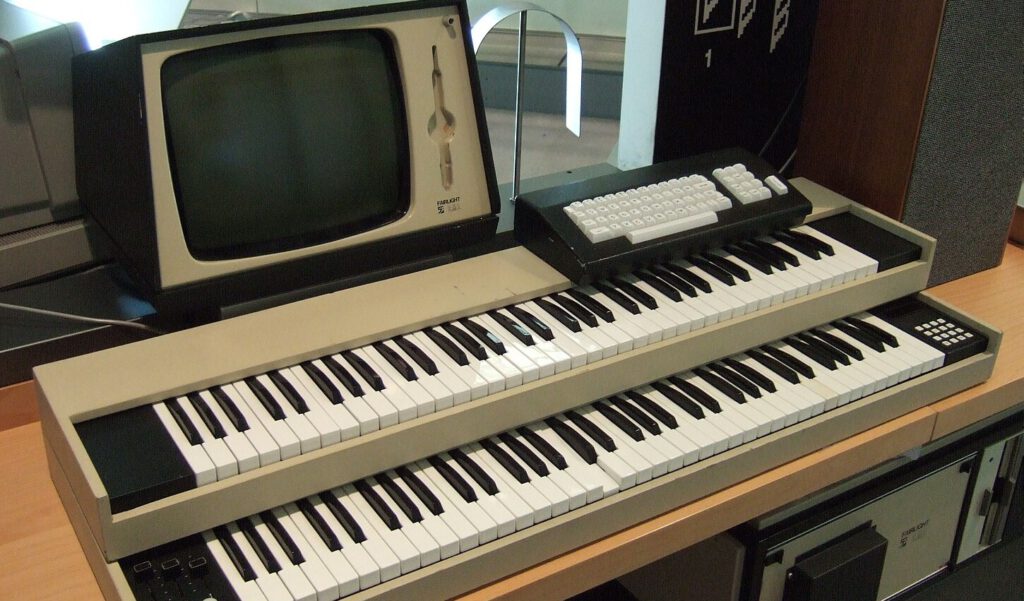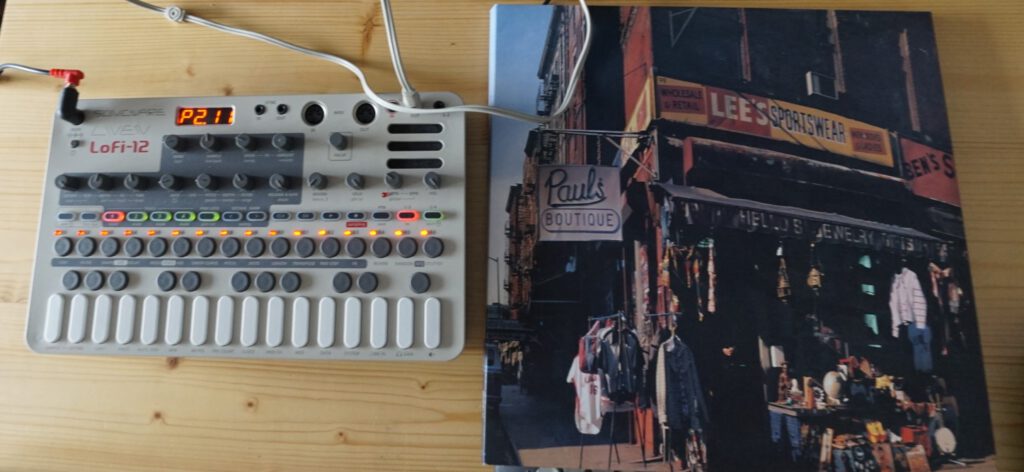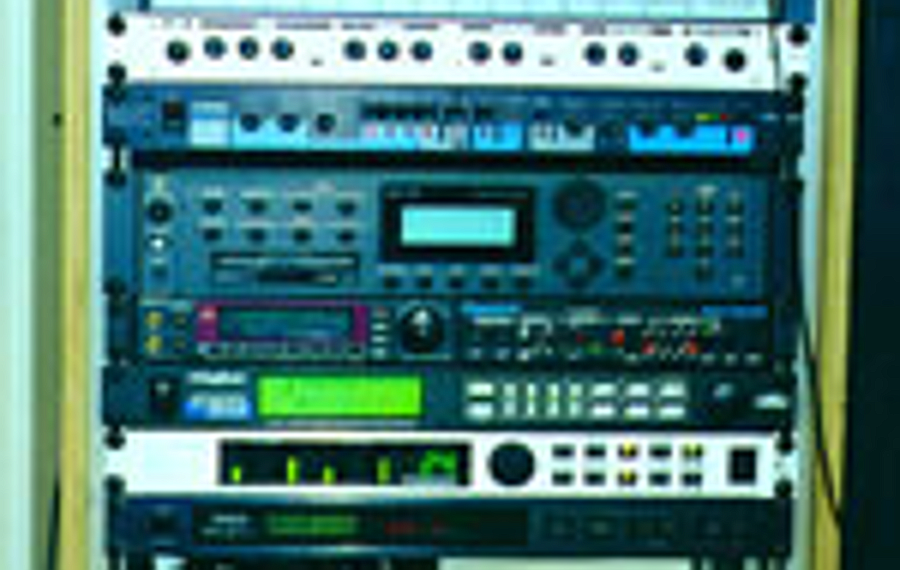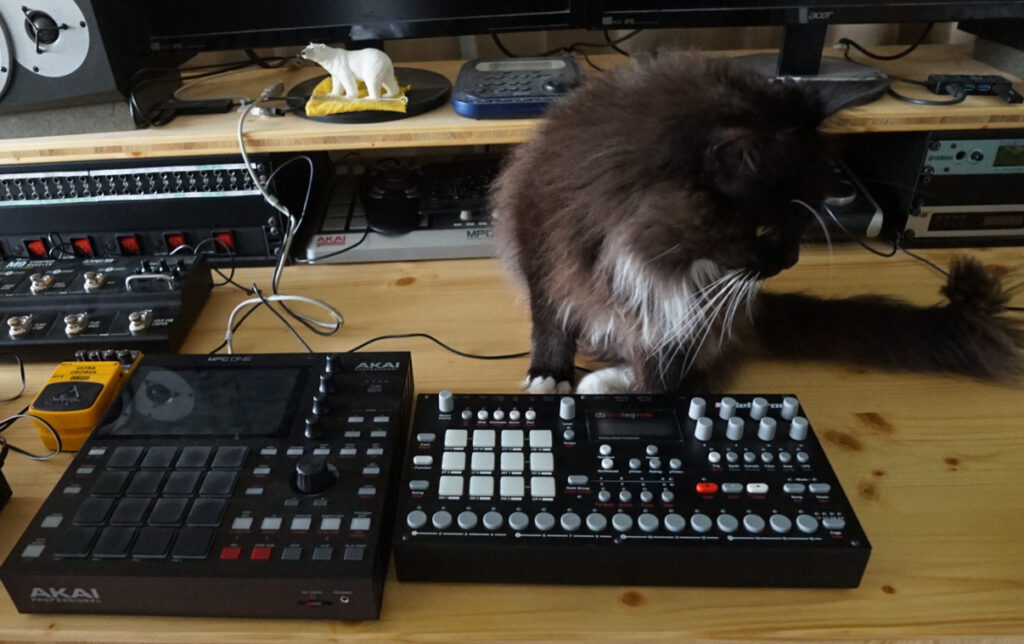Musical instruments called samplers. Where you can record any bit of audio and then work with it musically. They came to relevance in the 80s, enabled some music genres, then disappeared for some time, and seem to be back.
A Brief History
Yes, there were folks who did sampler-like things e,g. with tape loops starting in the 50s, but the first proper sampler was probably Fairlight’s CMI (1st series) from 1979. This looked more like a large computer, and the asking price of 27 grand (more than 100 grand in today’s money) made its use for the working artist somewhat limited.

There were a little more affordable samplers like E-mu’s Emulator from 1984 – at around 8000 bucks still very expensive, but cheaper than a CMI. True democratization happened with Ensoniq’s Mirage (1985, $1695) and Akai’s S-612 also from 1985 for just under a thousand.
These were still somewhat limited, cumbersome to use, and had mostly 8-bit sampling depth.
A big contribution came from Akai in 1988 with the S-1000. Now we had „CD quality“, RAM in the megabytes, proper mass storage, you name it. This was a mainstay in studios at that time, as well as in live rigs. And in the same year, the MPC60 was released – while I consider it mostly a powerful sequencer with added sampling, most people (and especially artists at that time) perceive it as a sampler first and foremost.

The 90s were mostly covered by application of Moore’s Law: memory size, sampling rate and voice count increased, aided with advanced DSP processing.
And finally in 2001, Akai released the last dedicated hardware samplers, the Z4/Z8, ending an era. Computers had taken over by then.
Impact on Music
It’s safe to say that some music genres were either strongly shaped, or only enabled, by the use of samplers, and they grew mostly in the early 90s.
Jungle (and by proxy Drum ’n‘ Bass) relies strongly on the sampling and slicing of breakbeats. Early users mostly had pre-S1000 Akai devices in their rigs. For other EDM styles, sampling was maybe not as integral, but still relevant: think Daft Punk’s „New Disco“ (they were E-mu EIV power users, with an ESi-32 available as backup as an old studio photo suggests) or breakbeat-oriented music in general (The Prodigy’s Liam Howlett used a Roland W30 sampling workstation extensively).
And finally the elephant in the room: what would Hip Hop sound like if it wasn’t for the MPC?

And while not samplers per se, almost all of the synthesizers released roughly between the Korg M1 and the start of the virtual analogue craze spearheaded by the OG Nord lead – in years: ca. 1988-1995 – used prerecorded samples as the only or at least as an additional sound source. Of course the M1 did, as did the Roland JV-1080 series and its siblings. Even the Wavestation (wavetable/sequence) and the K5000 (additive) had samples. These devices shaped the sound of an era not only in pop/rock/dance, but also in film soundtracks.
The Storage Problem
For a sampler, samples were data that for a repeatable workflow, needed to be stored and recalled. And as sampler memory increased from the tens and hundreds of kB into MB, what was readily available at the time (floppy discs) was no longer practical. The solution was SCSI, a pro computer technology for attaching storage components. So you added a SCSI harddisk and maybe SCSI CD-ROM reader, probably in an external enclosure. Formats (not only of patches, but sometimes of file systems) were different between manufacturers, meaning this was a hassle. So while by the turn of the century home computing already had started to use memory sticks and memory cards widely, the ancient and last new samplers were still stuck with the cumbersome pro-IT components, using outdated interfaces (and with that, device availability issues). It wasn’t fun.
A New Golden Age?
If the original golden age was maybe by the end of the 80s/early 90s with the innovations not only in tech but also its use, I am seeing a second golden age that has been going on for a few years, after samplers had all but disappeared by the turn of the millenium.
Why is that? I see two main reasons:
- The „Storage Problem“ was successfully solved by the widespread and affordable availability of memory cards and sticks. There is no longer a relevant size or speed problem.
- A move back to hardware, with trends like Eurorack and DAWless leads to moving things out of the computer. Meaning you now need a hardware sampler again if you want to sample.
- 80s retro is a trend, bringing back clones of E-mu’s SP-1200 or Roger Linn’s Linndrum.
Mind you, we’re not getting the big Akais or E-mus back. But there is a strong offering of devices from manufacturers old and new – as of today, retailer thomann lists 47 offerings in their relevant category.
My personal take
While I had some devices in the past, sometimes only for a short time (Yamaha SU700 and E-mu ESi-32 come to mind), it didn’t click for me for a long time. And looking back, I believe this had mostly to do with cumbersome storage and also UX compared to what I was used to from the computer.
This has changed, however: as of today, I’m happy to not only use but regularly create and edit samples with the likes of MPC One, MC-707, SP-404.2, Lofi-12, and let’s not forget lots of Eurorack modules (such as the Distings or the Nebulae) offer sampling capabilities. But just the other day, I had given away the E-mu ESi-32 that I had discovered I hadn’t thrown away already.
So for me, it was about getting rid of the storage problem of old.


